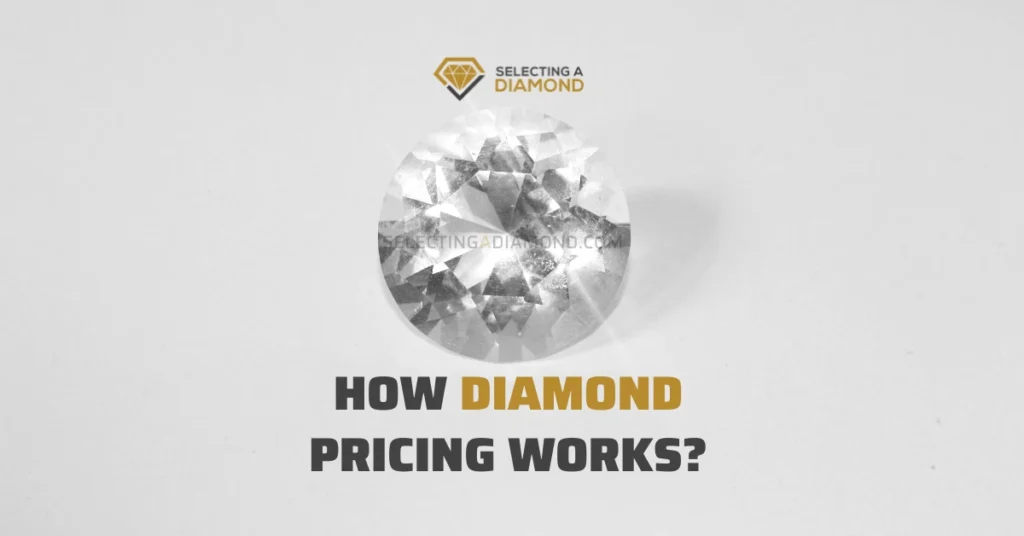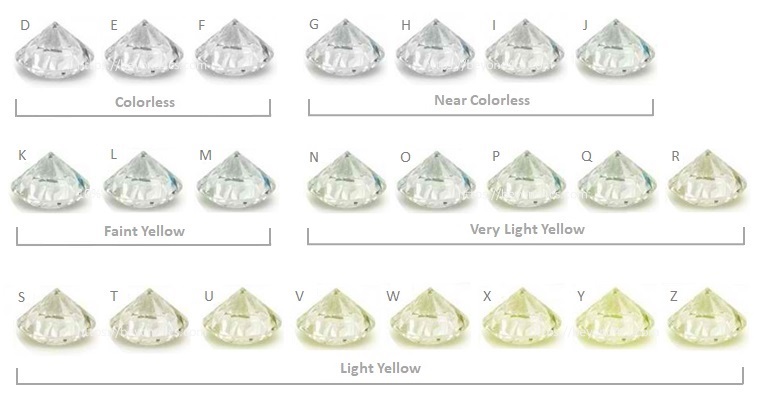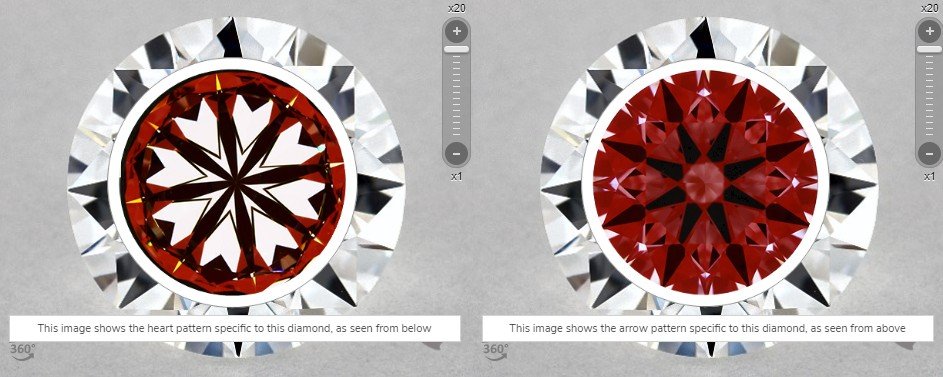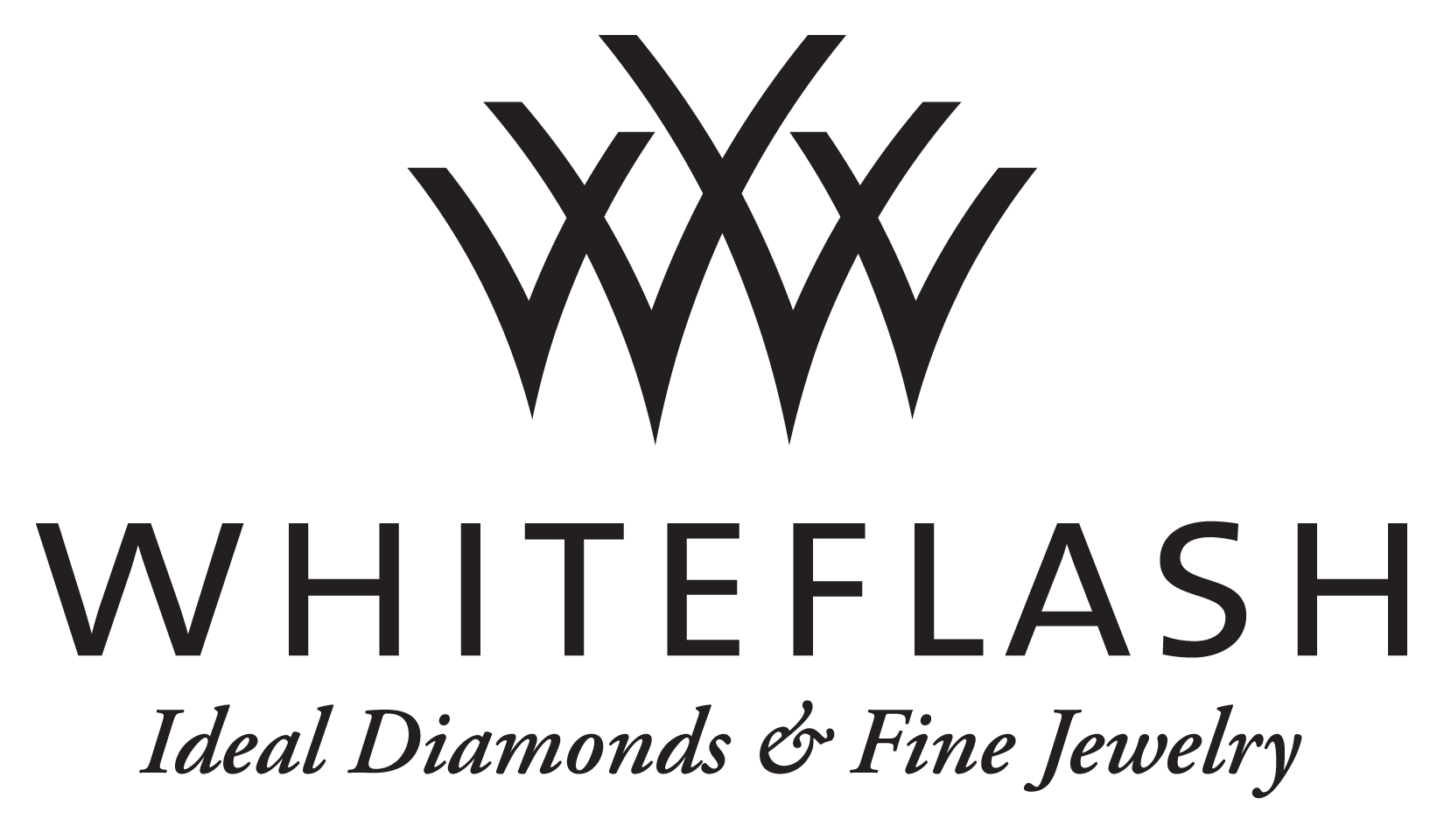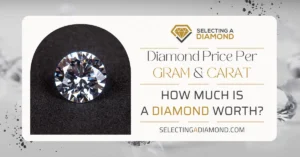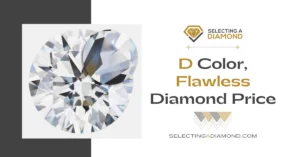Ever noticed how two seemingly identical diamonds can have a price difference of almost a thousand dollars? For instance, a quick look at James Allen’s website reveals a diamond priced at $4870, while another one with similar characteristics (identical 4Cs) stands at $5660.
Someone might think that pricing diamonds should be straightforward, like gold – where 1 carat of diamond could have a standard price of $X, and so on.
However, that’s far from reality. Unlike gold, the price of diamonds doesn’t follow a simple linear pattern (and don’t confuse diamond carat with gold karat).
The pricing realm of diamonds has its ‘sweet spots’, which when navigated wisely, can save you a pretty penny without compromising on quality. These sweet spots aren’t confined to carat weight; they extend to other factors such as clarity and color as well.
Let’s delve into an example to illuminate this further.
A search on James Allen for a diamond with 1 carat weight, F color, Excellent cut, and VS1 clarity presents a price range of $5500-$8200 (at the time of writing this).
Now, make a tiny tweak to these parameters, say, opt for a slightly lesser carat weight of >0.95, shift to a G color (which is indistinguishable to the untrained eye), and choose a VS2 clarity which still offers an eye-clean appearance.
Voila! Your price range now starts from $5100 and goes up to $6300, displaying a significant cost-saving.
The 1 Carat Mysterious Pricing Secret!
It’s no secret that the 1-carat diamond holds a certain allure in the hearts of many. Often seen as a benchmark of prestige and value, this coveted weight has become somewhat of a standard in the diamond industry.
However, a closer look reveals that going just a little below this “magical” number could unfold a world of value and almost identical aesthetic appeal.
Let’s dive into the peculiarities of this diamond domain.
A search on James Allen for diamonds ranging between 0.95 to 0.99 carat (while keeping other characteristics like Ideal cut, VS2 Clarity, H color, excellent polish and symmetry constant), yields 8 round diamonds.
A similar search but fixed at exactly 1.00 carat, surprisingly presents a larger pool of 101 diamonds.
Isn’t that strange? 1 carat has 11 times more diamonds than a range of 0.95 to 0.99?
The same pattern emerges on Blue Nile. A search with the carat range presents 12 diamonds, while locking it at 1 carat shows option of 83 diamonds.
The trend isn’t coincidental but a classic case of supply meeting the soaring demand for 1-carat stones. As demand surges, so do the prices.
So, what’s the real difference between a 1-carat diamond and, let’s say, a 0.95-carat diamond? In terms of weight, 1 carat is 0.2 of a gram, do some math, and you will find out that the 0.95-carat equals 0.19 of a gram.
Visually, the difference is -almost- unnoticeable, yet the cost savings can be substantial.
Why this happens? How diamond pricing is managed in this industry? Are all diamonds priced based on availability in nature / market? What about people’s interests?
Diamond Pricing: A Guide to Making Informed Choices
This post is crafted with a simple yet crucial objective:
To transform you into an informed consumer, equipped with insights that could potentially reshape your understanding of the famed 4Cs and their order of importance, as well as help you learn How to Buy a Diamond, like a pro.
We will see how diamond pricing changes -big time- between online and brick-and-mortar diamond retail spaces, how diamond valuation works, and you -as a consumer- should make an informed decision when getting one.
As we delve into the pricing dynamics within both online and brick-and-mortar diamond retail spaces, we aim to demystify the often opaque world of diamond valuation.
It’s an honest try to ensure that individuals are investing where it truly matters, and not merely chasing attributes that shine bright only on paper, quite literally on the diamond certificate.
At the core of a diamond’s price tag lie the celebrated 4Cs:
Color, Carat, Clarity, and Cut.
While these attributes are collectively revered, their individual impact on the diamond’s price varies significantly.
Moreover, even within a single ‘C’ graded by the same grading lab, the price disparity between two seemingly similar gradings can be substantial.
Let’s embark on a voyage to unravel how each characteristic intricately weaves into the diamond’s price narrative, ensuring your next diamond choice is as brilliant as the gem itself.
The Weighty Matter: Unraveling the Impact of Carat on Diamond Pricing
The concept of carat (weight) groups plays a pivotal role in the pricing of diamonds.
These groups categorize diamonds based on their actual weight (and not the size), the price per carat is significantly influenced by which group a particular diamond belongs to. Here are four examples of carat weight groups:
0.90 – 0.99
1.00 – 1.49
1.50 – 1.99
2.00 – 2.99
Playing WITHIN the group isn’t at all the same as moving from a group to another, let’s take a hypothetical scenario.
You stumble upon a 0.90 carat, E color, VS1 clarity diamond priced at $2000 on a website. One might assume that, keeping all other factors constant, a diamond from a different carat group, say 1.80 carat, would cost $4000—essentially doubling the price with the double carat weight. However, this isn’t the reality.
The case here isn’t only about doubling the carat, but here you’re crossing two weight groups, which comes with a hefty premium cost.
Let’s see a more realistic example to underscore the significant impact of this concept on diamond pricing.
Suppose you are eyeing a 1-carat E, VS1 diamond—a fairly common preference.
Here’s a link to a diamond on James Allen that meets these specifications, priced at $8660.
Now, shift your attention to this other diamond, sharing identical color, clarity, and cut but weighs 0.91 carats. Notice the price tag of $6260. The stark price difference stems from crossing the magical weight group threshold, causing a sizable premium.
The subtle carat difference of 0.09 between the 1.00 and 0.91-carat diamonds will barely be noticeable to the naked eye, be it yours, your fiancé’s, or anyone else’s.
While it might not make sense to drop from a 1.5 to a 0.90-carat to save money, revisiting your buying strategy for those borderline cases of 1.0-1.1 carats (or 1.9 to 2.1) is prudent given the dramatic price shifts that occur between 0.9 and 1.0 carats.
Delving into the Price Color Spectrum of Diamonds
Similar to how carat weight impacts the price, the color grade of a diamond also plays a significant role.
Let’s see how the color scale affects the pricing, highlighting some noteworthy anomalies that could help in making a financially savvy choice when buying a diamond.
Color Scale Breakdown
Diamonds are graded on a color scale ranging from D to Z, where D represents a colorless gem and Z indicates a yellowish hue.
A crucial point to note is that diamonds graded between D and J are classified as colorless or near colorless, making it exceedingly difficult to discern any color difference between adjacent grades with the naked eye, especially when viewed face up.
For instance, distinguishing between a G and H diamond when held side by side is almost impossible, even for a seasoned jeweler.
For further exploration into the intricacies of diamond colors, refer to the our diamond color chart guide which provides an in-depth discussion on this aspect, and explains why it may be beneficial to choose a diamond one grade lower in color if budget constraints are present.
Premium on Color
Much like with carat weight, ascending the color scale also entails a premium.
A 1.0 carat E VS1 diamond will cost much more than the same diamond with an F or G color grade. This premium is reflective of the superior quality perceived with a higher color grade.
However, the pricing difference become apparent when transitioning from a G to an H color grade. The drop from G to H sees a significant savings with any noticeable color difference to the naked eye.
Real-World Pricing Examples
Take for instance a 1.30 Carat F VS1 diamond priced at $10,660 in contrast to a 1.30 G VS1 diamond priced at $8,960; this scenario illustrates a considerable price difference for a mere one-grade color drop.
However, the narrative takes a subtle turn when comparing that exact G VS1 diamond priced at $8,960 with a 1.30 carat H VS1 diamond priced at $8,420.
The price difference between these adjacent color grades is much less dramatic as you obviously noted.
Savvy Color Selection Recommendation
Given the lack of noticeable color difference between adjacent grades, opting for a diamond with an H color grade can offer considerable savings without compromising on the aesthetic appeal.
It’s essential to remember that every diamond is unique and priced accordingly. Various factors besides color and clarity can influence the pricing. However, by browsing similar diamonds on platforms like James Allen, the stark price jump between H & G color grades becomes apparent.
Disclaimer:
While the examples provided aim at comparing almost identical diamonds concerning cut, polish, and symmetry, the inherent uniqueness of each diamond may present other factors affecting the price.
Nonetheless, the demonstrated pricing pattern between H & G color grades remains a significant consideration for potential buyers.
Unveiling the Impact of Clarity on Diamond Pricing
Diamond clarity is a pivotal factor in determining the price of a diamond, much like color and carat weight. Clarity grades range from Flawless FL grade to Included-3 (I3).
Most reputable vendors like James Allen and Blue Nile don’t offer diamonds graded lower than I1.
For an elaborate discussion on diamond clarity, feel free to explore our dedicated Diamond Clarity Chart guide, where we cover each grade, and to which extent it affects diamond’s brilliance, appearance & durability.
Understanding the Clarity Pricing Spectrum
Contrary to the pricing structure of color and weight, diamond clarity doesn’t exhibit a particular grade or group where a significant pricing leap occurs.
However, the essence of understanding diamond clarity lies in deciphering the grading scale, which references imperfections as observed under a 10X magnification.
Take a VVS1 (Very Very Slightly Included 1) diamond as an instance. Under a jeweler’s loupe that magnifies the diamond 10 times, no inclusions are visible to the naked eye.
This is not our own opinion, but this clarity grade was defined by GIA, they graded it as “Inclusions are difficult for a skilled grader to see under 10× magnification”
Mind you: Difficult, skilled, and under 10x magnification!
So, without a magnifying instrument, detecting inclusions in such diamonds, especially once set in a ring, is near impossible.
Similarly, diamonds graded as VS1 or VS2 (Very Slightly Included) exhibit inclusions that are barely perceivable under 10x magnification for a skilled grader, and virtually invisible to the naked eye.
Clarity-Price Paradigm in Reality
Delving into real-world examples, consider this VVS1 diamond priced at $7,240. A comparable diamond with identical color and size, but graded as VS1, is priced at $5,910.
This scenario underscores a substantial premium paid for a clarity grade that doesn’t translate to any noticeable value to the unaided eye.
Further down the clarity scale, a Slightly Included 1 – SI1 (which is the recommended clarity grade to always start from) graded diamond of the same characteristics is priced at $3,780, signifying even more savings.
Insane, isn’t it?
The Complex Nature of Clarity
Unlike color and weight, clarity is a little more complex- the location, type, size and color of the imperfections can be of major importance.
For instance, a minor black inclusion near the edge of a diamond (e.g., an SI1 grade) could easily be obscured by a prong in the setting, making it an acceptable choice in many cases.
In a very similar diamond, but it has the exact inclusion located at the center of the diamond’s table may hugely affect its appearance, even if it’s categorized as a higher clarity grade like VS1.
This example elucidates why considering the position of the inclusion is as vital as assessing its severity.
Actually, in some cases an SI1 graded diamond with a hidden inclusion could be more desirable than a VS1 graded diamond with a centrally located imperfection.
Importance of Detailed Examination
We assume you already seen the importance of inspecting the diamond using high quality imagery, many reputable online retailors offer 360-degree HD images for their collections.
That’s why we always encourage shopping from sites like James Allen, Blue Nile, and Whiteflash.
Such detailed inspection empowers buyers to make well-informed decisions, balancing between clarity grades, pricing, and the actual visual appeal of the diamond.
Deciphering the Influence of Cut on Diamond Pricing
Diamond Cut is an integral aspect that not only influences its aesthetic appeal but significantly impacts its price, specially when we know that cut is the most important factor among the 4Cs.
Let’s see how & why the diamond cut takes this huge effect on diamond appearance, and eventually the final price.
Cut Quality
A well-cut diamond is a spectacle of brilliance and fire. The allure that a nicely cut diamond exudes is unmatched, and this is where the pricing starts to climb.
The grading for cuts ranges from Excellent (Ideal), through Very Good and Good, down to Fair and Poor.
Our advice (and everyone’s else) is always going towards diamonds graded as Excellent or Ideal, as they exhibit the most brilliance and are well-proportioned, hence justifying their price tag.
Generally, you will find that upgrading from a Very Good grade to an Excellent grade comes with a higher price tag compared to upgrading from a Good to a Very Good grade.
This is because there’s a justified demand for Excellent cut diamonds, making it a desired grade for many, which in turn increases its price.
Premium Cuts: Hearts & Arrows
When you dig a little deeper on this, you will encounter the Hearts & Arrows diamonds
We’ve seen this on most reputable brands, like Astor by Blue Nile™, similar to Whiteflash with their A CUT ABOVE ® collection, and last but not least, the True Hearts™ by James Allen.
These diamonds are crafted meticulously to attain precise symmetry and captivating light performance. The pattern of hearts and arrows they reflect when viewed under a specialized loupe is a testimony to the craftsmanship invested in them.
Here is an example of how these technologies reflect hearts & arrows in a True Hearts diamond on James Allen:
However, this precision and beauty come with a higher price tag, significantly marking them up compared to standard cuts, and this price isn’t always justified, we won’t go into details here but you already have links to our detailed reviews for each of these lines, feel free to check them out and learn more about H&A diamonds.
Diamond Pricing Summary
Understanding the pricing of diamonds can often seem like navigating through a maze. However, with a grasp of the core principles, it becomes more intuitive.
Although no two diamonds are identical, thus differing in price, they principally derive their value from the renowned 4Cs: Cut, Color, Carat, and Clarity.
It’s always recommended when you’re on the market to get a diamond, try to learn how pricing works, which grades you need to get (and which to avoid), the magical effect of 1 carat diamonds, and other stuff we already discussed.
And if you are looking for more details please check our guide for Diamond Price Per Carat.
With these insights, you are better equipped in your pursuit of finding that perfect diamond that resonates with both your aesthetic and budgetary preferences
Still not sure where to buy your diamond?
We always recommend shopping diamonds online and created a Full guide to shop diamonds like a Pro.
Among online retailers, here are our favorite stores click their logo to visit store
-
James Allen:
Our favorite online store, best diamond imaging technology available today, comes with the largest collection with more than half a million loose diamonds.
-
Blue Nile:
Widest collection of loose diamonds of all sizes, great imaging technology for most of their inventory (hundreds of thousands of diamonds), great customer support.
-
Whiteflash:
Home Of A CUT ABOVE® Super Ideal Diamonds, they stand out from the crowd by offering premium diamonds cuts, tailored to those who love the details, at great prices too.

